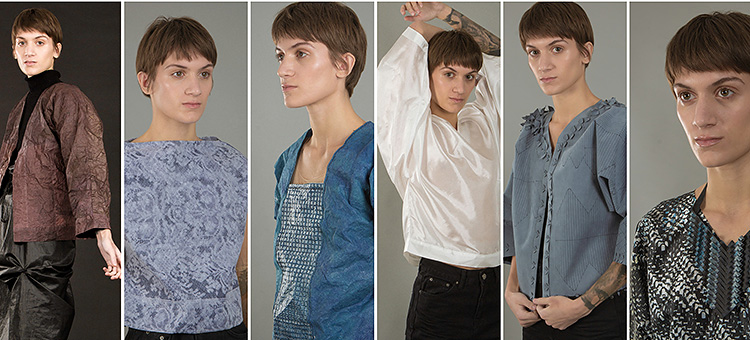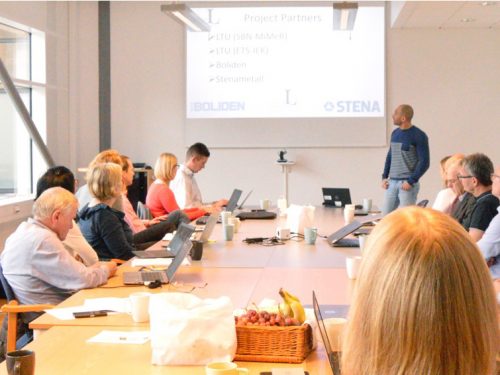
“If we can make our clothes last longer, we can minimize the major environmental impact produced when the clothes are created”
Greg Peters, Chalmers
Using all these means to extend the garment lifespan is the main reason we see great environmental gains, because most of the adverse environmental impact caused by clothes is created during their manufacture when fibres and fabrics are made. That’s why it is very beneficial to be able to use our clothes for longer, so that we reduce our need to buy new ones.
“This is an important message: we buy too many clothes! If we can make our clothes last longer, we can minimize the major environmental impact produced when the clothes are created,” he says.
Another way of creating more sustainable clothes is to develop materials that have a very short life cycle teamed with lower environmental impact during their production. Fast fashion clothing can be recycled or turned into compost, but the substantial environmental benefit is reaped right at the point of purchase, because the buyer thereby avoids conventional garments with all the adverse environmental impact that they involve.
In the project, a number of garments made of paper pulp were produced that have an intended lifespan of a few days. Greg Peters states that sustainable production has major advantages, and that the garments are light in weight, but they must be used a sufficient number of times.
“It’s not enough to use a paper garment twice. According to our calculations, you need to use it at least five times for the environmental gains to surpass conventional clothes used normally. However, there may be places where paper garments that are disposed of after use are a smart idea, such as hospitals,” he says.
Peters describes the report as an attempt to facilitate fashion designers’ and environmental scientists’ understanding of how environmental performance in clothes can be improved. He primarily has two recommendations for achieving a more sustainable and circular fashion industry:
Try to reduce the weight of materials in a garment without reducing its quality, for example by using stronger fibers.
Investigate how to increase and create new value in a garment at the point in time when the user would normally throw it away.
As part of the project, clothing brand Filippa K has chosen to create two pieces based on the research: one commercial, recyclable jacket made of recycled materials, and a concept dress made of paper. Peters hopes that the fashion industry will find ways of creating more sustainable fashion – and ideally with the help of research.
“This is the first time that one of my reports has been linked to a fashion exhibition. It’s really exciting that designers are starting to think along these lines,” he says.
Text: Ulrika Ernström
About Circular Design Speeds
Circular Design Speeds is a collaborative project involving:
- Mistra Future Fashion, an interdisciplinary research programme run by RISE
- Greg Peters, Associate Professor in the Division of Environmental Systems Analysis at Chalmers, who together with researchers from RISE has conducted a life-cycle analysis for the garment prototypes.
- Centre for Circular Design at University of the Arts London, which produced these garment prototypes.
- Clothing brand Filippa K, which has created two pieces based on the research: one commercial, recyclable jacket made of recycled materials, and a concept dress made of paper.
Read the research report “LCA on fast and slow garment prototypes”, by Greg Peters, (principal author), Gustav Sandin, Sandra Roos and Björn Spak.
At the end of November 2018, the research findings and garment prototypes were showcased at an exhibition at University of the Arts London.
Tips on sustainable clothing
Greg Peters’ three tips to consumers who want to take a more sustainable approach.
- Buy fewer items of clothing.
- When you buy clothes, invest in strong items that will last for more than just a few washes.
- Think about how you wash your clothes. Especially in the drying phase – hang your clothes up to dry and avoid tumble dryers, which destroy the garments’ fibres.
The creators of the clothes
All the garments, shown in the image at the top of the page, were created at University of the Arts London
From left:
1. Fast Concept – Paper leather jacket, by Prof. Kay Politowicz and Dr Kate Goldsworthy
2. Fast Concept – Laser Line Mono, by Prof. Kay Politowicz and Dr Kate Goldsworthy
3. Fast Concept – Pulp-It Indigo, by Prof. Kay Politowicz and Dr Kate Goldsworthy
4. Slow Concept – First Step Plain Shirt, by Prof. Rebecca Earley
5. Slow Concept – Jacket by Laetitia Forst
6. Slow Concept – Overprinted Shirt and accessories, by Prof. Rebecca Earley


